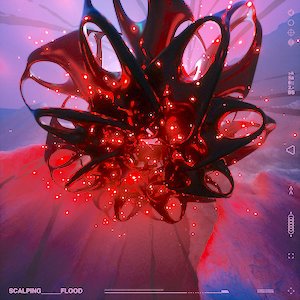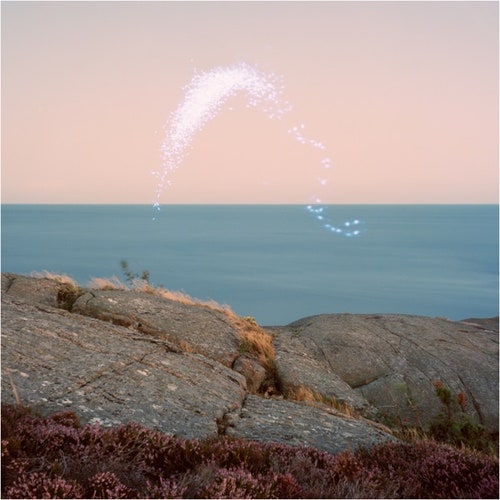
There’s a dark cloud that hangs over 2014’s Mess, the seventh album by Liars. The vibrant hair strands that adorn the album art are now reminders of the band that used to be. Since its release, two-thirds of Liars have departed: Julian Gross calling time on his participation in 2014, and Aaron Hemphill’s nagging back issues putting him on the bench in 2017.
What followed was unexpected; Angus Andrew carried on Liars as a solo project for two efforts – 2017’s underappreciated TFCF and its immediate follow-up 2018’s less-than-stellar Titles with the Word Fountain. Working every angle for two albums is a lot for anyone, but with his stone-cold stare piercing a hole through us, Andrew pressed on. Now we have The Apple Drop – easily the best Liars record in a decade, thanks in part to the additions of multi-instrumentalist Cameron Deyell and drummer Laurence Pike.
No shade intended towards 2012’s solid WIXIW, but the experimental nature of Liars had evolved to a point of no return. The faux-pop of 2007’s Liars was the only true access point for newcomers, and it’s nestled in between narrative giants, the magnum opus Drum’s Not Dead and the beloved Sisterworld. Liars aren’t a pop band by any means, but The Apple Drop is the first time they’ve sounded like a rock trio since their 2001 debut, They Threw Us All in a Trench and Stuck a Monument on Top.
The tone of The Apple Drop is livelier, something not felt since Sisterworld when the band went balls-to-the-wall. Hearing “The Start” kick off the album with such a vibrant riff warms the heart. When Andrew coalesces with Pike and Deyell on “Big Appetite”’s chorus of “They carry on for you” it feels like new ground is being broken for the band.
Everything here sounds tighter than before, with an emphasis on riffs and melody, allowing the experimental tendencies of Liars to take a step back for a moment. As a result, The Apple Drop will likely be labeled their ‘pop’ album, and that’ll be a justified assessment. The synthy “Sekwar” pushes a few boundaries but it nevertheless keeps itself grounded with climaxing choruses amongst traditional deadpan lines from Andrew; “I’ll fight first, I’ll fight first,” he affirms.
Of course, ‘pop’ is relative, and Liars are still fairly experimental when held side-by-side with traditional rock bands. The intense “Star Search” wouldn’t be welcomed with open arms on local radio stations, its eerie drums and spiraling organs would likely send DJs running for the hills. Its immediate follow-up, “My Pulse to Ponder” squelches as Andrew sings “I’ll cut your throat” repeatedly, a display that would see equal amounts of radio personalities fleeing their positions. Liars haven’t forgotten who they are, but Angus Andrew unironically wants to make things more interesting by going largely in a new direction.
The Apple Drop’s visual component unveils a lot of the themes behind the music. The three music videos for the consecutive tracks “Sekwar”, “Big Appetite” and “From What the Never Was” form a trilogy that pays homage to classic science-fiction thrillers like Alien, The Thing, and Twelve Monkeys. These images make a perfect accompaniment to the sounds and play on loop in your mind while listening to the album. While there’s more metaphor and meaning to be drawn from these videos, one thing is clear – Andrew is having fun with Liars again. He’s ripping open cadavers and screaming maniacally into the darkness, and soundtracking these mini-movies with cinematic meditations.
There’s nothing resembling the vocal gem that is “The Other Side of Mt. Heart Attack” here, but the closest we get is “Acid Crop”, where Andrew hoarsely yelps into oblivion in between soft melodic singing. It’s another fine example of how Liars can be moving forward while looking backward, not losing sight of what they’ve accomplished. Andrew seems to start over with every Liars record, but always incorporates the lessons learned with the new risks, and for much of the band’s discography this approach has been successful. He continues that trend with The Apple Drop, mining the past’s raw live performances with the electronics from their mid-career spikes, and finally arriving at their latest pop evolution.
The post Album Review: Liars – The Apple Drop first appeared on Beats Per Minute.















